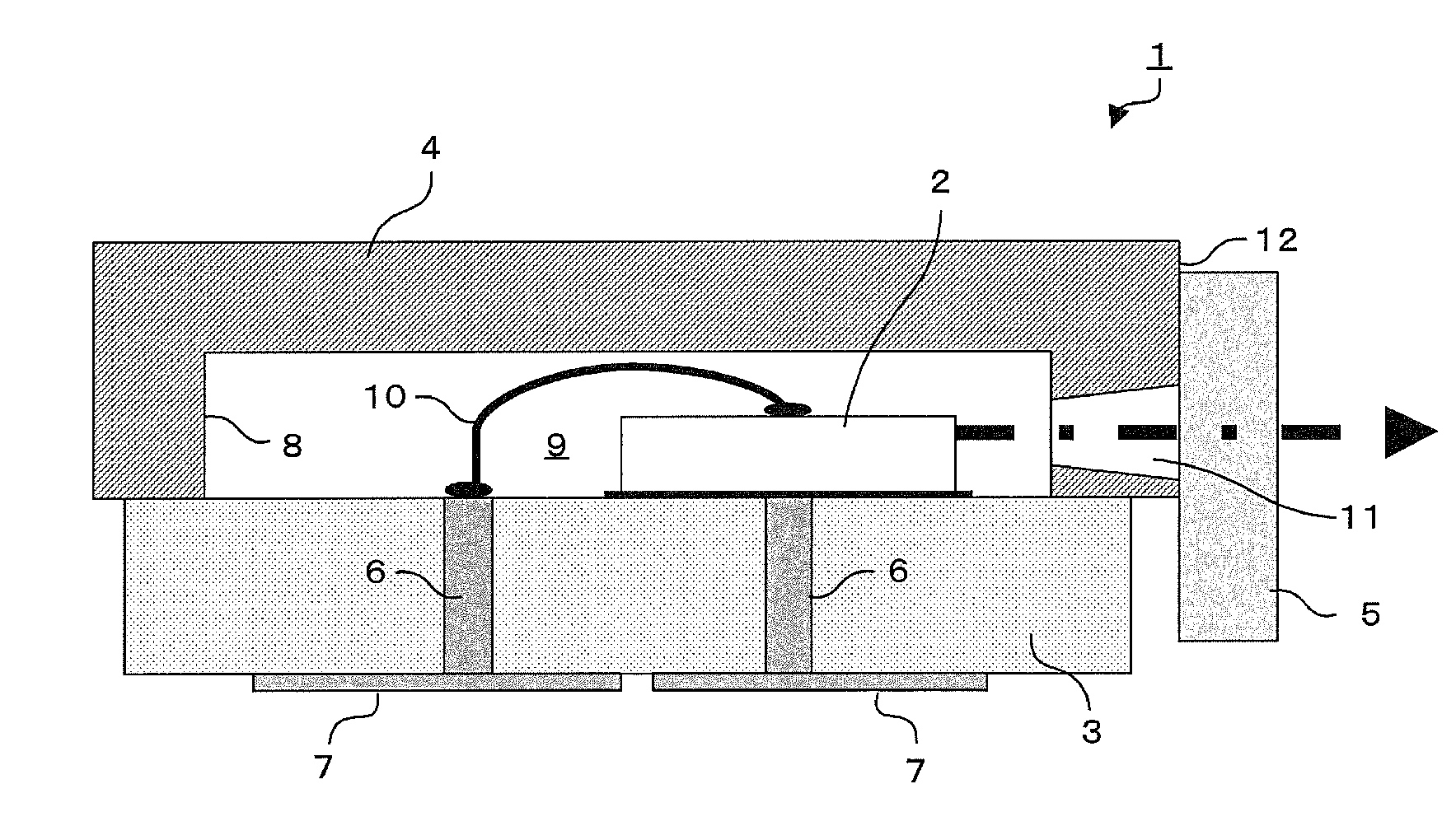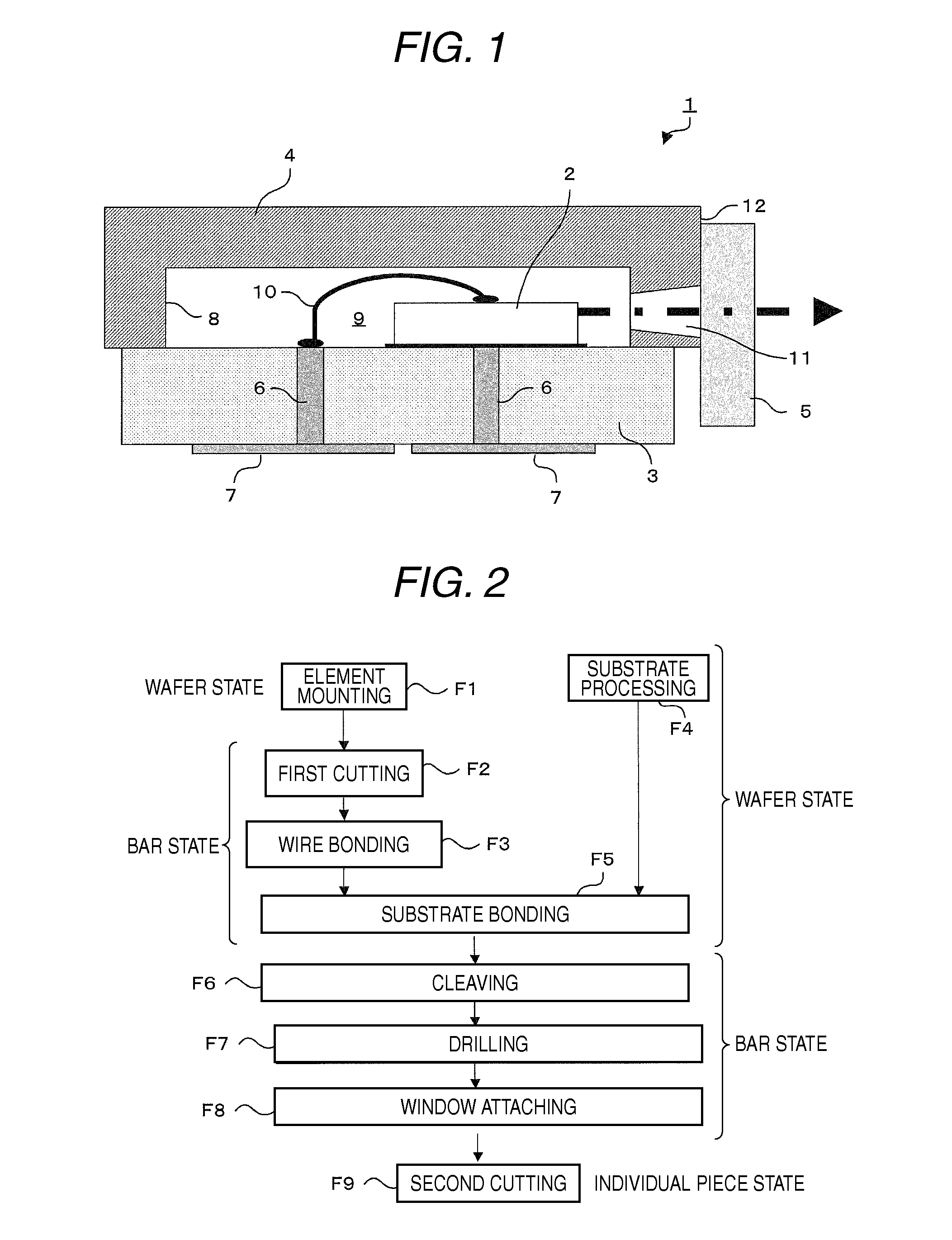Light emitting device and method of manufacturing light emitting device
a technology of light emitting device and light emitting device, which is applied in the direction of solid-state devices, lasers, semiconductor lasers, etc., can solve the problems of difficult size reduction, inferior hermetic sealing performance, and difficult mass productivity, so as to achieve the effect of improving hermetic sealing performance and mass productivity
- Summary
- Abstract
- Description
- Claims
- Application Information
AI Technical Summary
Benefits of technology
Problems solved by technology
Method used
Image
Examples
first embodiment
[0036]FIG. 1 is a sectional side view showing a configuration of a light emitting device according to a first embodiment of the invention. A shown light emitting device 1 largely includes a light emitting element 2, a first substrate 3, a second substrate 4 and a light exiting window 5.
[0037]The light emitting element 2 is formed by using, for example, a semiconductor light emitting element such as a semiconductor laser. In the light emitting element 2, light is emitted in a direction of an arrow (right direction) in the drawing. The light emitting element 2 is an element having light emitting wavelength of, for example, 450 nm or less, and particularly, when used as a light source for a Blu-ray disc, an element having a light emitting wavelength of 405 nm is used. Incidentally, in a light source for a DVD, an element having a light emitting wavelength of 650 nm is used. The light emitting element 2 is bonded to an upper surface of the first substrate 3 by using, for example, solder...
second embodiment
[0060]FIG. 8 is a sectional side view showing a configuration of a light emitting device according to a second embodiment of the invention. In the second embodiment of the invention, explanation will be made by putting the same numerals on corresponding components cited in the first embodiment. The shown light emitting device 1 largely includes the light emitting element 2, the first substrate 3, the second substrate 4 and the light exiting window 5, which is the same as the first embodiment in this point. However, the second embodiment is different from the first embodiment in the following points.
[0061]Specifically, in the first embodiment, the first substrate 3 is formed by using an AlN substrate not having cleavage characteristics. On the other hand, in the second embodiment, the first substrate 3 is formed by using a silicon substrate having cleavage characteristics. According to this, in the second embodiment, both the first substrate 3 and the second substrate 4 are formed by...
PUM
 Login to View More
Login to View More Abstract
Description
Claims
Application Information
 Login to View More
Login to View More - R&D
- Intellectual Property
- Life Sciences
- Materials
- Tech Scout
- Unparalleled Data Quality
- Higher Quality Content
- 60% Fewer Hallucinations
Browse by: Latest US Patents, China's latest patents, Technical Efficacy Thesaurus, Application Domain, Technology Topic, Popular Technical Reports.
© 2025 PatSnap. All rights reserved.Legal|Privacy policy|Modern Slavery Act Transparency Statement|Sitemap|About US| Contact US: help@patsnap.com



